Are you posting to YouTube Shorts, yet?
The short-form video trend took social media by storm when TikTok surged in popularity in 2020. Now, YouTube, Instagram and Facebook all have ways for you to upload short-form videos in the form of shorts and reels.
In this post, we share tips on how to grow your audience with YouTube Shorts.
1. Understand the YouTube Shorts algorithm
The YouTube Shorts algorithm works differently than the main YouTube algorithm.
This is by design since you mostly engage with YouTube shorts in the same way you do with videos on TikTok: scroll up to view a new video.
This is why the algorithm has adopted TikTok’s strategy. It uses content you search for, watch and like to determine the types of content you’d be interested in the most.
It then fills your feed with content that’s tailored to you.
2. Start each short with a hook
The first three seconds of a YouTube short are very important.
Viewers are patient with regular YouTube videos. They know they’re a longer format, so they’re willing to give them more time to pique their interest.
If a viewer doesn’t feel captivated by the first three seconds of a short-form video, they’ll just scroll to the next one.
Work on perfecting those first three seconds by including a hook to make your videos more exciting for viewers.
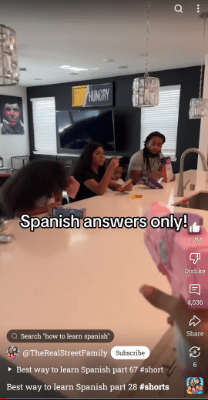
Here are a few hooks you can use:
- Sharing results at the start of a video
- Example: Showing the before and after of the project you’ll be working on
- Asking a question
- Example: “When was the last time you cleaned your dishwasher’s filter?”
- Summarizing the video
- Example: “I’m going to show you how to change your spark plugs in less than two minutes”
3. Make each second of your short engaging
Like I said, viewers have little patience for short-form videos. So, while your video needs to have a hook to capture their attention, it also needs to be engaging every step of the way if you want to keep them around until the end.
An easy way to do this is through storytelling.
Determine the primary purpose of your short, then plan how it should start (your hook) and end (primary purpose fulfilled).
Then, fill in the middle with content that allows for a natural flow between your start and end points.
Use engaging visuals and overlays, especially if a large portion of your video involves you talking to the camera.
Add captions to optimize the video for viewers who may have their sound turned off.
4. Keep each short under 60 seconds
YouTube shorts can be as long as three minutes, but it’s best to keep them under 60 seconds.
The goal is to make them as rewatchable as possible. This increases your watch time as well as the likelihood of your viewer liking, commenting and sharing your video.
Experiment with different video lengths, such as less than 10 seconds, around 10 seconds, 15 seconds, 20 seconds, 30 seconds, 45 seconds and 60 seconds.
Choose a few of these durations, and create a few videos for each to see which one receives the most views and engagements.
5. Condense YouTube videos into shorts
Getting started with YouTube Shorts is easy to do if you already upload regular YouTube videos.
All you need to do is condense your video into a short or several shorts.
Condense tutorials and guides into a short. Use shorts to share funny and exciting clips for all other types of videos.

6. Find hot topics in your niche
One of the best uses for short-form videos is covering hot topics in your niche.
You can keep track of trending topics by following news sources related to your niche, keeping an eye on online forums, following major brands related to your niche on social media and using Google Trends.
Once you hear about a topic, research everything that’s currently known about it, and cover it in a short.
This helps you become a source of information in your niche, which is important for building authority.
7. Target audience pain points
One of the best ways to increase engagement is by aligning your content with audience interests.
Targeting the problems your audience is facing is a great way to do this.
Determine what struggles your audience is facing, and provide solutions with YouTube shorts.
8. Share candid, in-the-moment clips
Content that wasn’t planned are some of the funniest, most interesting and most entertaining videos on the web.
So, if you’re doing something related to your niche and something funny or interesting happens, record it!
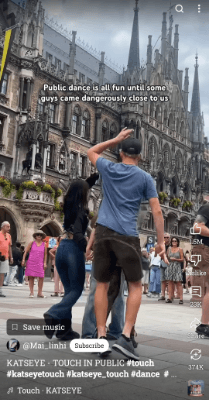
Chances are if you find it funny or interesting, your audience will as well.
This is one of the easiest ways to produce shorts, and it makes your content more relatable.
9. Participate in trends
If you’re scrolling through YouTube shorts and you notice a trend you can participate in, go for it!
Content for social media trends is more likely to get a boost from the algorithm.
Try to participate in a challenge in a way that relates to your niche. This increases your odds of attracting more of your target market to your video.
10. Collaborate with other creators
This is a tried and true growth strategy for social media.
Scroll through your feed and perform a few searches to find potential creators you can collaborate with.
They can be in your niche or adjacent to your niche. For example, a skateboarder could easily collaborate with a BMX rider.
Reach out to each, and work on a few content ideas together. You’ll either expose each other to new audiences or increase engagement among the audience you share.
11. Use captivating thumbnails
Like YouTube videos, you can create thumbnails for YouTube shorts. These are what viewers will see when they browse YouTube.
Experiment with different thumbnail styles.
Start by picking out an exciting moment from your video, and turning it into the thumbnail.
Use a graphic design tool like Canva to create thumbnails on the fly with templates for YouTube shorts.
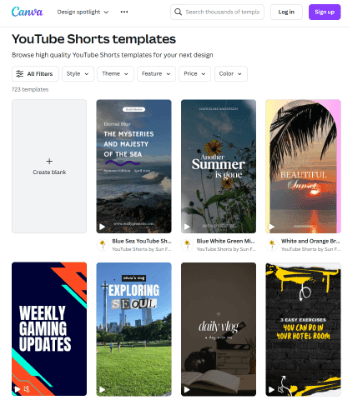
12. Use hashtags and keywords in your caption
Hashtags and keywords help the YouTube algorithm determine what your video is about.
Hashtags also make it easier for viewers to find your content when they browse hashtags related to your niche.
This is why you should insert relevant hashtags and keywords in each caption you create for shorts.
Use the YouTube search bar to determine which hashtags and keywords your audience uses.
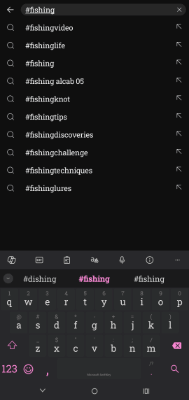
13. Use trending sounds when appropriate
Like TikTok, you can use a trending sound or music to accompany a YouTube short in place of raw audio.
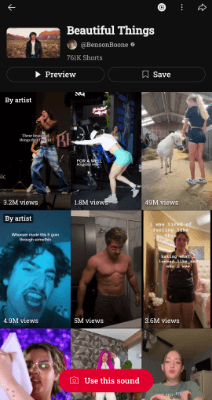
The most popular use case for this is when you’re participating in a trend.
However, if your video is merely showcasing something and you don’t necessarily need to use your voice for it, consider using a sound or music.
When you create shorts in this way, use captions to provide quick descriptions when needed.
14. Know when to publish youtube shorts
We did a bit of research and discovered the overall best time to post YouTube shorts is between 6PM and 10PM on Mondays and Tuesdays.
The best time to post on weekends is between 12PM and 6PM.
We also determined the best times to post on each day of the week in case you want to post on other days.

If you want a more definitive answer, view your analytics in YouTube Studio.
You’ll be able to see when your audience is most active. These may be your best times to post YouTube shorts, but it’s best to experiment to be sure.
15. Be consistent with your posting schedule
When you do figure out what your best times to post on social media are, be consistent with whatever schedule you choose.
This lets your audience know when to expect your next video.
Use a social media scheduling tool. A tool like SocialBee will allow you to repost content from other platforms quite easily.
16. Engage with the YouTube platform
Be sure to respond to viewer comments in a timely manner.
While you’re at it, follow other creators, like their content, and leave comments of your own on their videos.
17. Pay attention to your analytics
There are a few metrics you should pay attention to in YouTube Studio:
- Average view duration
- Retention rate
- Demographics that consume your content
- Number of views and engagements you receive overall and per video
Keeping track of these can help you optimize your content.
You should also keep track of your engagement rate. Use this formula to calculate your engagement rate:
Engagement rate = (total number of likes, comments and shares / total number of views) x 100
You can calculate this based on all of your videos or just one.
Is Posting to YouTube Shorts worth it?
We have quite a few statistics in our stats post for YouTube Shorts that demonstrate this platform’s worth.
For starters, according to Statista, YouTube shorts receive over 70 billion views per day.
They also receive 106.28% more likes than regular YouTube videos do, according to Metricool.
Even without these metrics, YouTube is one of the most widely used websites in the world. If you’re going to post short-form content, you’re better off posting it here as well in an attempt to expand your audience.
Note from Adam: I’ve tested YouTube Shorts on accounts for a couple of new projects that I’ve launched over the past year. What I’ve noticed is that YouTube’s algo for shorts tends to be a lot more forgiving than Instagram’s algo, especially for new users. If you’re already creating the content for Instagram or TikTok, there’s no reason not to repurpose it on YouTube.
Related reading:
Disclosure: Our content is reader-supported. If you click on certain links we may make a commission.
